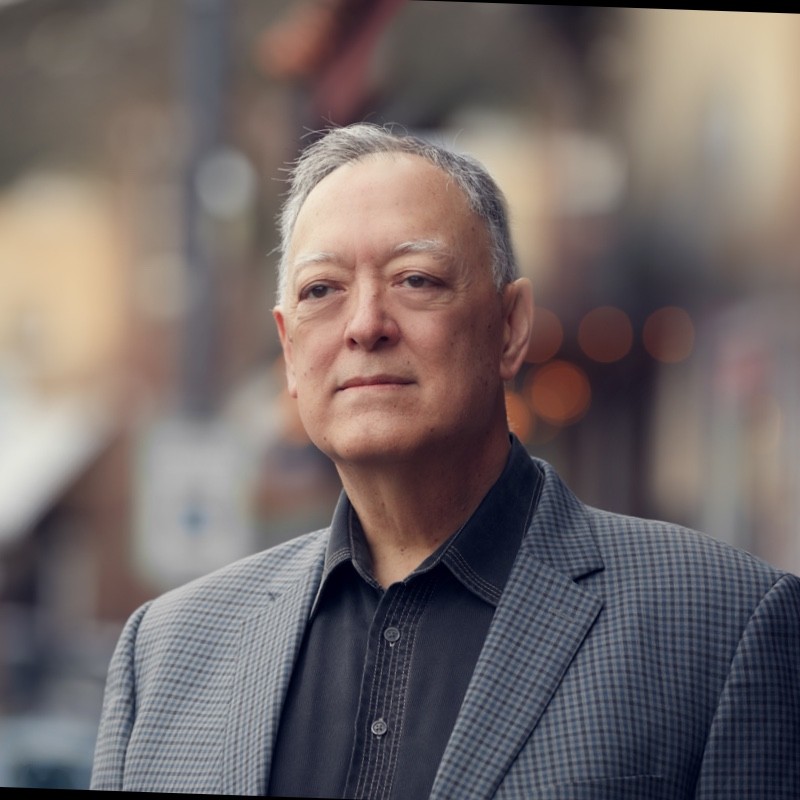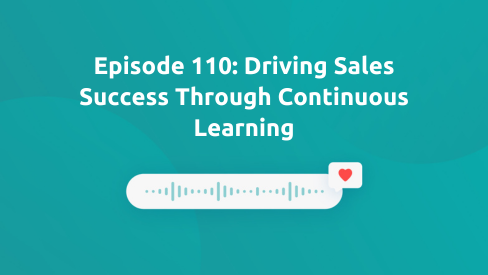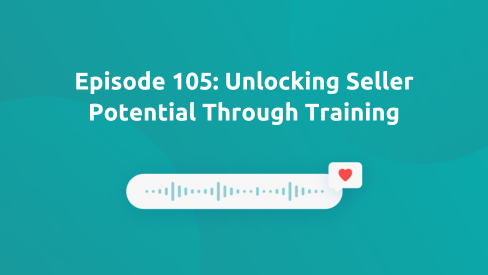According to the Association for Talent Development (ATD), companies that offer comprehensive training programs have 218% higher income per employee than companies without formalized training. It is clear that organizations need to be investing in training to increase productivity within their teams, but how can leaders do this in the most effective way?
Shawnna Sumaoang: Hi and welcome to the Win Win Podcast. I’m your host, Shawnna Sumaoang. Join us as we dive into changing trends in the workplace and how to navigate them successfully. Here to discuss this topic is Jim Jones, principal consultant at Highspot. Thanks for joining, Jim! I’d love for you to tell us about yourself, your background, and your role here at Highspot.
Jim Jones: Thanks, Shawnna. It’s really great to be with you today. As you said, my name is Jim Jones. I’m a principal consultant on our strategic enablement services team. I’ve been at Highspot since October 2021. Before that, I was a two-time Highspot customer and I launched Highspot at two different organizations before joining the company and have been in enablement for almost a decade and a half. Before that, I was a really terrible salesperson, but I learned what it meant to carry a bag and live in a quota position.
SS: We’re excited to have you here, Jim. I have the opportunity to work with you when you are a customer and we are excited and glad to have you in-house at Highspot. Now, to dig into some of the things that we wanted to chat about today, Jim, in recent years, I think we’ve all seen that the selling landscape has gotten a lot more complex and training is really becoming more important than ever before. Can you share why you think leaders should be prioritizing training and coaching, especially in times of economic uncertainty?
JJ: It’s interesting to think about training over the spectrum of the years and the move to much more complex selling environments. Today, especially in times of economic uncertainty, our ability to really drive sales productivity on a per-head basis is just so critical to us. Gone are the days where we can simply throw numbers at attainment numbers and hope that we have enough bodies on the pitch to cover the spread. Today we have to be much more thoughtful about driving productivity and making sure that the team that we have on the field is delivering the types of results that are meaningful to the organization. Our ability to both train to those specific successful selling skills as well as the ability for our frontline managers and leadership team to coach to those skills is critical in delivering the type of outcomes that we need to have in this.
SS: I couldn’t agree more. Jim, from your perspective, how can the Highspot training and coaching platform make it easier for leaders to create training collateral to help the reps be even more successful and productive in today’s times?
JJ: The one thing I love about the Highspot training and coaching platform is, from my perspective, it’s the first training platform that’s purpose-built for revenue teams. One of the challenges that we face is the twofold dilemma when it comes to training, which is that there is a tremendous intellectual burden simply getting reps up the ramp to understand and know the ins and outs of the solutions we’re offering to the marketplace. That piece hasn’t gone away. We still have to train for knowledge.
One thing that I think that we do differently is to very specifically train to what I should be doing, not just what I should know. One of the things that I think is really powerful is within Highspot we have a thing called the strategic enablement framework that many of you may have listened to the podcast on. One of the fascinating things that I’ve seen is we did an internal training on Highspot training and coaching on strategic enablement framework, and associated with that training was a link to the thought leadership piece on strategic enablement, and today, that’s the third or fourth most used content piece in our reps selling activities.
By connecting content within the scope of the training, we find that there’s actually a direct connection between what the reps are learning and what the reps are using on a day-to-day basis in their selling efforts. I think that’s a really unique perspective in that the reps are immediately given opportunities to put their training and action in a selling activity, and I think that’s really powerful.
SS: I couldn’t agree more. Talk to me a little bit more, Jim, about how training can impact productivity, and I’d love it if you have some best practices for training techniques that you’d recommend.
JJ: We could go for days on ideas of how to best activate your training programs, but I think it goes back to that core piece within our strategic enablement framework where we talk about the call to action. Over the course of my career, I have been involved and worked for companies with tremendously complex selling solutions, and it seems like for a big portion of my career, just getting reps up the ramp to understand the breadth and complexity of our products seemed like a monumental task in and of itself, and it’s certainly not any less today than it was 10 or 15 years ago.
What we really have to begin to focus on is the what to-dos, what we in the strategic enablement framework call the ‘call to action’. What are those things that our top-performing reps do consistently over the course of the selling life cycle that set them apart from the rest of the crowd? By really focusing our training on those activities, like how I catalyze behaviors and how I catalyze actions through my training. Those are the sorts of things that we really need to start to focus on. We can’t abandon the training for knowledge, but we really have to make a hard pivot to say, what am I getting my reps to do better or do more of through my training efforts? Those are the things that will ultimately drive the outcomes that we need for the business.
From a best practices perspective, I think there’s really starting with this idea of what it is that I want reps to be doing. I see so much of our training across multiple different organizations where they don’t tie a specific call to action to a training class. I always love to use the acronym TSWBAT, the student will be able to… fill in the blank. If I start with that and I actually know what I want the learner to do at the end of the training, it makes it much easier for me then to tie my training to a specific selling activity, which then hopefully will deliver top-of-growth pipeline and sales revenue increases. For me, that’s just critical that we get to that point in our training development.
SS: I love some of those recommendations. Now, Jim, on LinkedIn, you shared that you’re working to transform the conversations sales teams are having with customers. How do you drive this behavior change through training and what role does Highspot play in your training strategies?
JJ: Years ago I had our VP of Product Management come to me and say, how do you know that your training efforts are being successful? I think a lot of it centers around this idea of what is the value conversation that we are teaching our reps to deliver and that’s really the transformational sales conversation. I love the fact that within our platform, we’re teaching reps how to consistently deliver that value message and it needs to be critical. At the core of every training that we deliver is how do I know that you’re delivering that?
Within Highspot training and coaching, things like submitting video pitches help me then see, or hear, probably more specifically that the reps are starting to pick up that value language and use it on a day-to-day basis. The thing that we know about top-performing reps is that they have the agility to adapt to specific selling situations and deliver the most powerful value message for that persona at a given time. We can measure that with things within our training and coaching platform, and we can also use it to make sure that our frontline managers are reinforcing that value language with our sellers as well. Something that makes an immediate impact on our ability to convince prospects that our solution can help them run a better business.
SS: Absolutely. Now, in a similar vein to what that sales leader asked you, I feel like a lot of enablement practitioners are also asked a similar question to this. How does behavior change correlate to productivity?
JJ: Great question and I think one of the things that we, in the enablement world have long debated on is what behavior change means and how we actually activate it. I think of it kind of in two different ways. When we think about sales productivity, there are only really two things that I can ask reps to do, do something better, or do something more. It’s really around this idea that I can’t really measure behavior change at a macro-level, but what I can do is begin to see whether or not a seller is more engaged with the types of selling activities that I need them to be doing on a consistent basis.
For instance, one of the things that I love to do is if a rep goes through a training course within our training and coaching module, is that rep is now going and viewing things on our content side? Are they more engaged with things like sales plays and sales kits? Can I actually begin to see them pitching more content to prospects in their top-of-funnel development? What that does then allows me to draw a direct connection from my training to selling activities that says this training catalyzed behavior change in the way that I can actually observe through the use of further engagement in the platform, sending out more pitches, and more prospect engagement. It’s no longer kind of the black box of training where I just run people through a bunch of courses and hope for the best. That strategy just has never worked and never will.
SS: I agree. Smile sheets no longer count quite as much when it comes to correlating your results to impact. In that same vein, what are some of the key results that you would encourage leaders to be looking for and tracking when it comes to behavior change to see how training is landing with their reps? How has Highspot helped to gather some of these insights?
JJ: It’s a great question and I think that really focusing on selling activities is critical. So often I see enablement teams struggle with this idea of how do I actually assess whether or not my training is making a difference. I’m in the midst of writing a paper on how to do assessments, and it’s an age-old problem where what we test for is retention or recall, and what we really need to then begin to do is how we assess for improved activity levels or how do we look for the acceptable evidence that the training that I’ve delivered has given me an uplift in productivity.
As I said before, actually being able to draw a direct connection to some type of selling activity. In Highspot it’s really easy. One of the things that I love is to go in and if I’ve done training on a specific solution or a launch or a product or a point of view that we have as a company, I can then begin to see reps engaging their prospects with that value language through things like pitches or shared content. Highspot allows us to draw those correlations in a way that we’ve taken out the mystery.
If I have a rep go through a training and I see no uplift in activity, I see zero pitches sent out to their prospects, then I know one of two things. A, either that rep is underperforming, or B, quite honestly, maybe my training missed the mark and I need to go back and look at the training that I’ve delivered. No longer are we just throwing things against the wall and hoping for better outcomes. We’re actually connecting those things in a way that’s more concrete and meaningful and actionable. I think that’s a huge part of what we bring to the market.
SS: I couldn’t agree more. Last question for you, Jim. To close, can you share your predictions for the future of training and how sales enablement will continue to play a key role in ensuring that we’re really preparing our reps for the future?
JJ: I think if I were gonna be a contrarian, I might say that we would likely be in the same place we have been in the last 20 years where training continues to muddle along in the same way, but I actually think that this downturn has acted as an opportunity for us to really think about training in a much more focused manner. I think what we will begin to see is training shifting around away from solely the what to know piece to the what to know and what to do part. If we can’t tie those two together in very concrete ways, we’re simply going to be doing the same thing we’ve been doing for the past 20 years.
We’ve often talked about the Pareto distribution or the 80/20 rule where 80% of our reps are mid performers and 10% are top performers, and 10% are bottom performers. We can no longer rest on that formula. We have to be able to move the frozen middle so that they are actually moving towards top performers and the only way we can do that is to make sure our training has clear desired objectives that are tied to rep activities that lead to rep productivity. I think that in the world of sales training, we’ve got to get to a place where we’re really more focused on what to do’s, and hopefully, those will be the things that we can tie to specific selling outcomes. Hopefully, that’s what the future looks like. I’m anxious to see how that plays out in the coming months.
SS: Thank you so much for joining us, Jim. I appreciated your insights on training and coaching. To our audience, thank you for listening to this episode of the Win Win podcast. Be sure to tune in next time for more insights on how you can maximize enablement success with Highspot.



